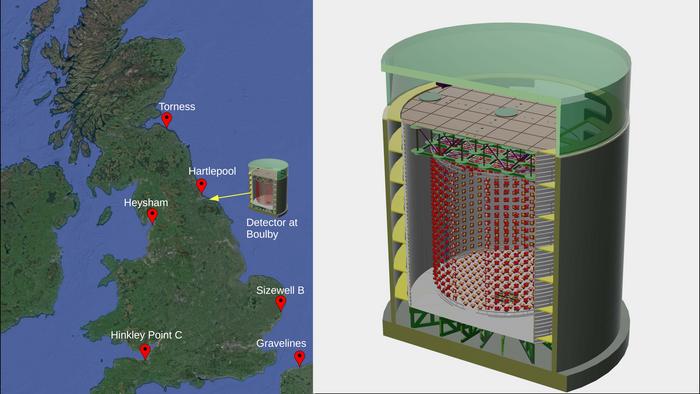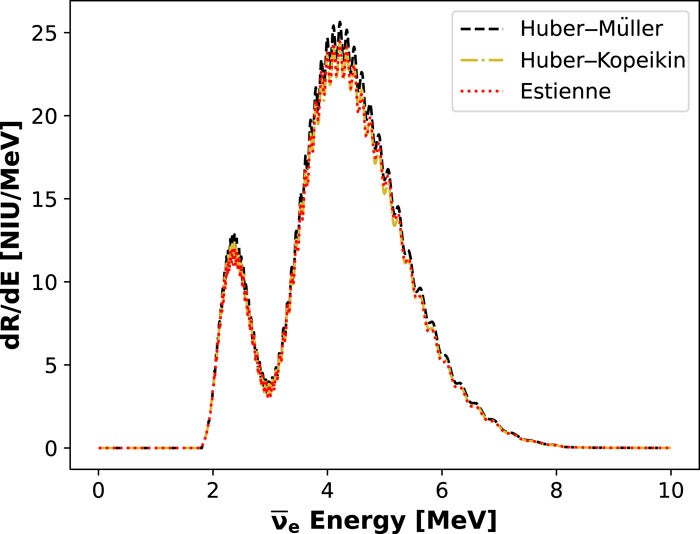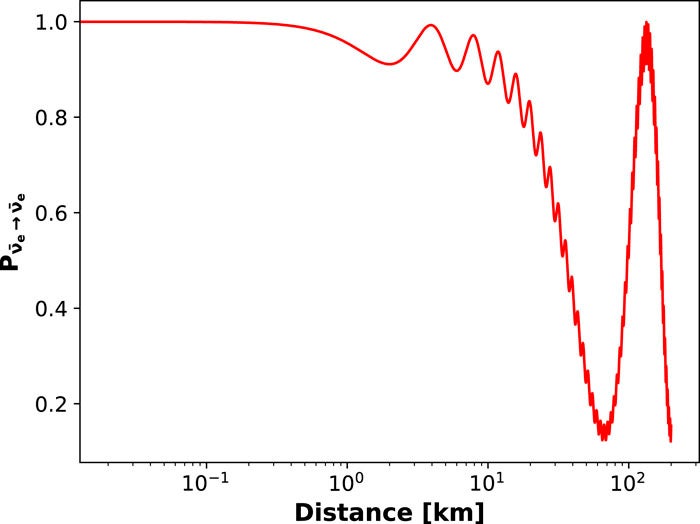Nuclear fission has long been a cornerstone of global energy production. With increasing energy demands, the International Atomic Energy Agency (IAEA) estimates that nuclear capacity will rise by 80% by 2050. While nuclear reactors serve as a reliable source of electricity, they also pose risks tied to nuclear proliferation.
Reactors can be used to produce materials for weapons, raising concerns over their misuse. As the number of reactors grows, the need for robust, non-intrusive monitoring technologies becomes urgent.
Traditional safeguards rely heavily on physical inspections and accounting methods. These approaches, though effective for many current reactors, face limitations. Inspections require access to facilities, making them susceptible to tampering or misinformation.
The search for innovative, less-invasive monitoring techniques has led researchers to explore the use of antineutrinos—elusive particles generated during nuclear reactions. These particles hold immense potential for enhancing reactor transparency and ensuring nuclear safety.

Antineutrinos are subatomic particles with near-zero mass and no electric charge, making them exceptionally challenging to detect. These antimatter particles are produced in abundance during the fission of heavy nuclei such as uranium and plutonium. As they travel from a reactor core, they carry vital information about the reactor’s operations, including power output and isotopic composition.
What sets antineutrinos apart is their unshieldable nature. Unlike other forms of radiation, they cannot be blocked or masked, making them a reliable indicator of reactor activity. By capturing and analyzing these particles, scientists can verify reactor operations without direct access to the facility.
Stephen Wilson, a researcher at the University of Sheffield, explains, “This information could tell us not only whether a reactor exists and about its operational cycle but also how far away the reactor is.” This capability could revolutionize nuclear monitoring, offering a remote, objective, and tamper-resistant method of oversight.
Antineutrino detection builds on the principle of neutrino oscillation. Once produced, neutrinos and their antimatter counterparts can change their “flavor” as they travel through space.
Related Stories
For reactor emissions, this means that electron antineutrinos, the most common type, can transform into other flavors depending on their energy and travel distance. Analyzing these oscillations provides critical insights into reactor behavior and helps confirm the authenticity of reactor signals.
In a study published in AIP Advances, researchers from the University of Sheffield and the University of Hawaii tested a prototype detector designed to monitor antineutrinos. This device uses Cherenkov radiation—a phenomenon where charged particles moving faster than light in a medium emit a faint blue glow. The eerie glow often associated with nuclear reactors has long been a staple of neutrino detection in astrophysics.
The prototype was proposed for deployment in the Boulby Mine in northeast England, a kilometer underground. This location minimizes interference from cosmic antineutrinos and other background noise. The detector was tested against a real-world reactor landscape, including six reactors in the UK and northern France.
Results showed that while the prototype could capture antineutrino signals and measure their energy spectra, it struggled with efficiency over long distances. Distant reactors often produce signals so faint—sometimes just one antineutrino per day—that distinguishing them from background noise becomes challenging.

Wilson acknowledges the limitations: “Discriminating between these particles is a significant analysis challenge, and being able to measure an energy spectrum can take an impractically long time.”
However, the research demonstrated the potential for future designs. Incorporating advanced materials, enhanced detection technologies, or placing detectors closer to reactors could overcome current challenges. Smaller, portable devices may even allow for on-site monitoring, further expanding the technology’s applicability.
Antineutrino detection addresses critical gaps in current nuclear safeguards. Existing methods rely on access to facilities and cooperation from reactor operators. In cases where transparency is lacking or geopolitical tensions run high, these methods can fall short.
Antineutrino monitoring, by contrast, is immune to shielding and deception. Its ability to operate remotely reduces the risk of tampering and provides an independent verification tool. This could prove invaluable in preventing crises like the 1994 DPRK nuclear standoff, where uncertainty over reactor activities escalated tensions.

The technology also enhances the ability to monitor compliance with international treaties, such as the Treaty on the Non-Proliferation of Nuclear Weapons. By providing a continuous, tamper-resistant stream of data, antineutrino detectors could strengthen global oversight and reduce the likelihood of clandestine nuclear activities.
Beyond proliferation concerns, this technology has applications in nuclear waste management. Analyzing the antineutrino spectrum of spent fuel could provide insights into its isotopic composition and decay process. This information is critical for ensuring safe storage and disposal of radioactive materials.
Despite its promise, antineutrino detection is still in its infancy. The current prototype highlights both the opportunities and challenges of this approach. While it successfully demonstrated the feasibility of remote reactor monitoring, significant advancements are needed to make the technology practical for widespread use.
Future research will likely focus on improving detector sensitivity and efficiency. Enhanced designs could leverage novel materials, such as liquid scintillators, to boost signal detection rates. Advances in data analysis techniques, including machine learning, may also help distinguish reactor signals from background noise more effectively.
Wilson hopes the study will spark further interest in the field. “What surprised me most is that this is not actually impossible,” he says, emphasizing the potential for antineutrino monitoring to become a cornerstone of nuclear security. The development of smaller, more portable detectors could bring this technology closer to practical implementation, enabling real-time monitoring at reactor sites.
As global reliance on nuclear energy grows, the importance of effective safeguards cannot be overstated. Antineutrino detection offers a path forward, combining cutting-edge science with practical applications.
By harnessing the unshieldable nature of these particles, scientists can provide an additional layer of oversight, ensuring that nuclear power remains a safe and transparent energy source.
Note: Materials provided above by The Brighter Side of News. Content may be edited for style and length.
Like these kind of feel good stories? Get The Brighter Side of News’ newsletter.
The post New prototype detector uses antimatter to detect nuclear radiation appeared first on The Brighter Side of News.